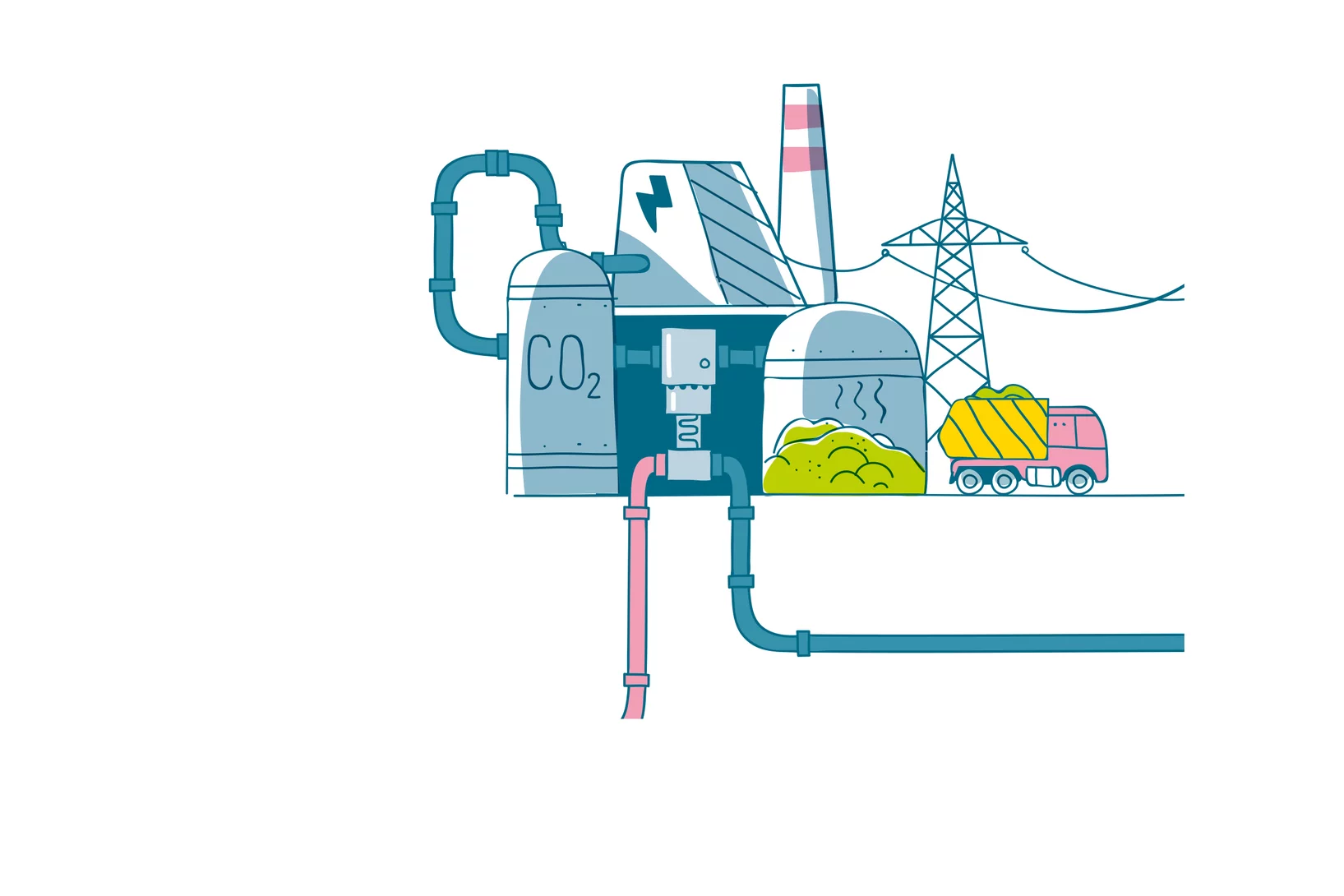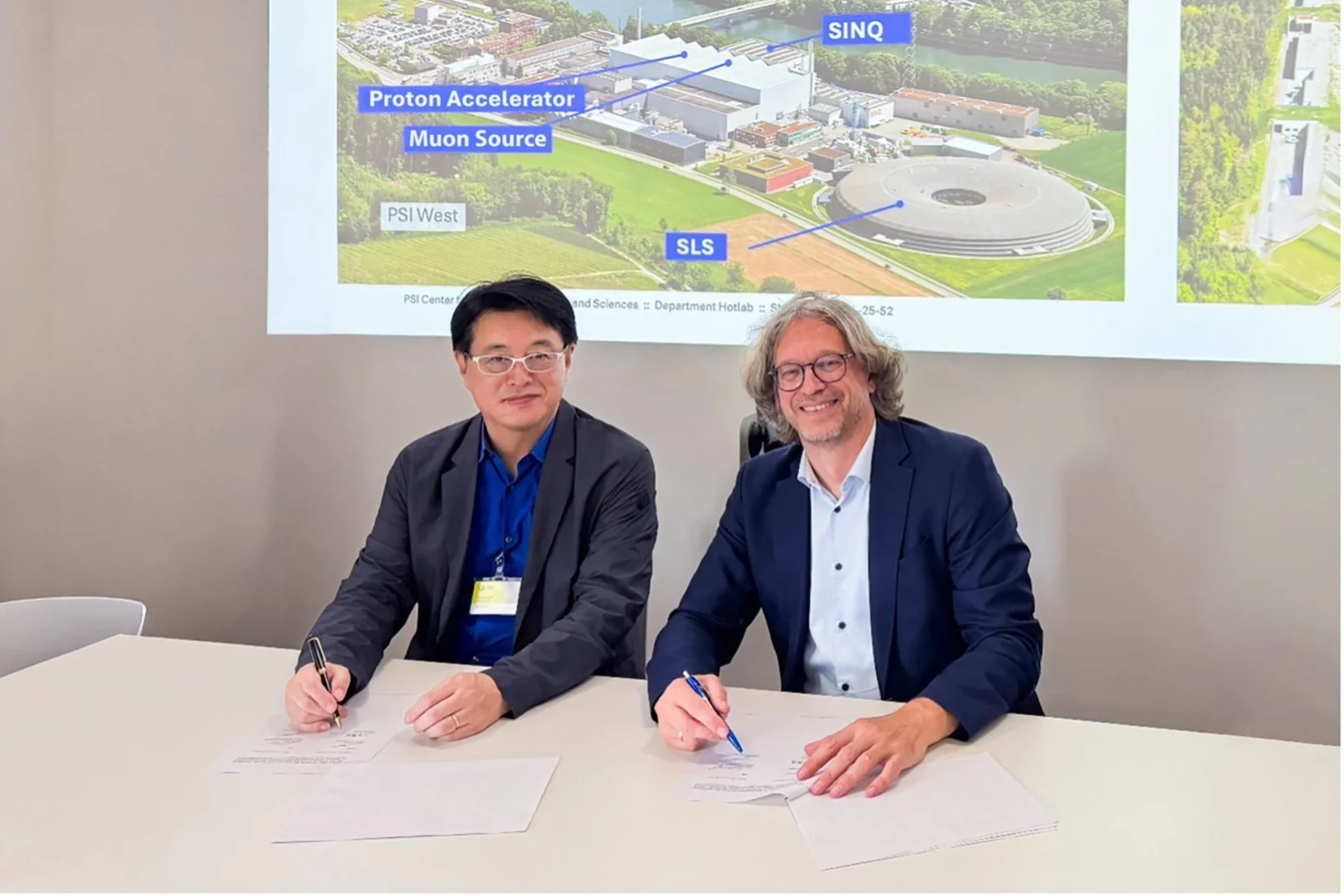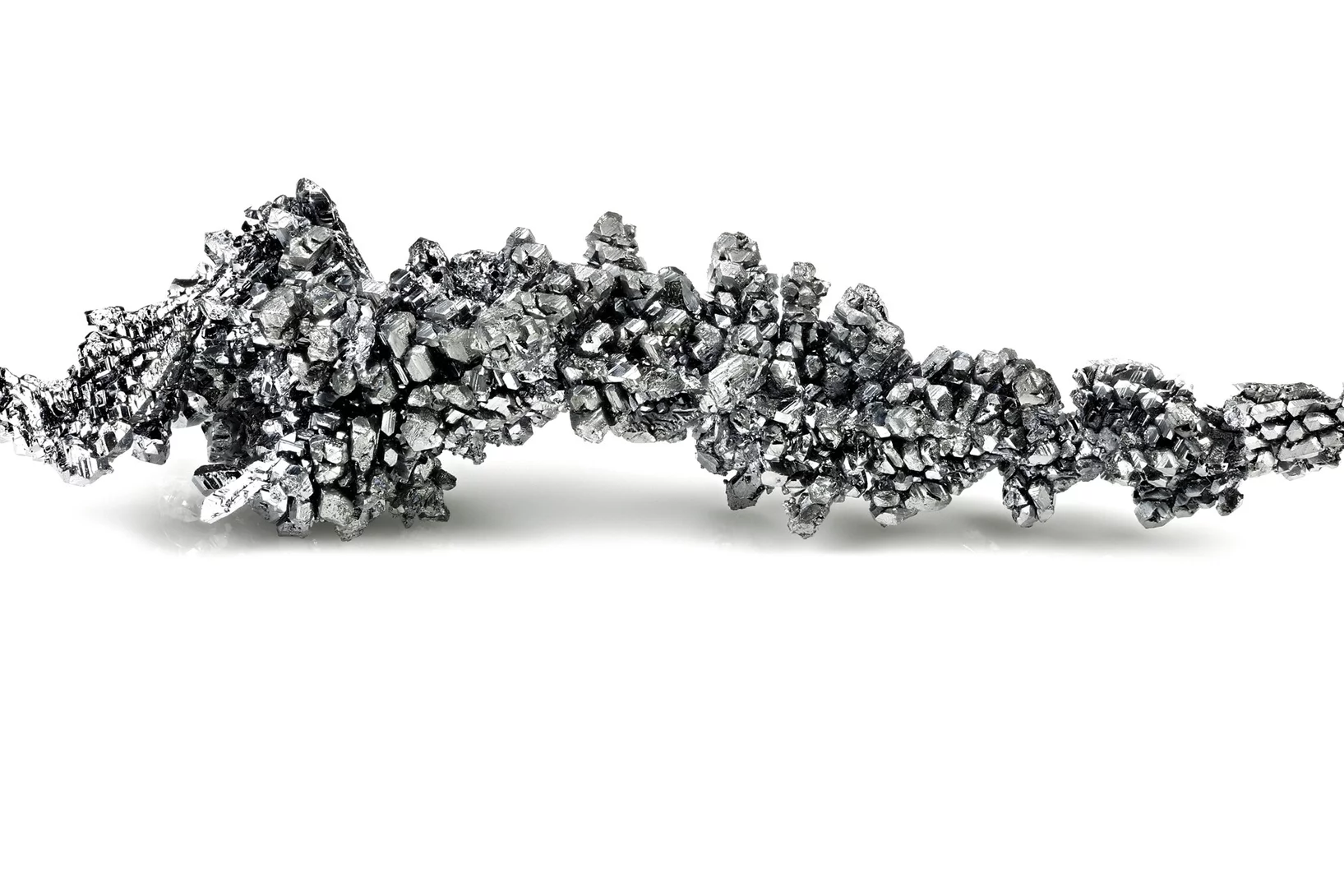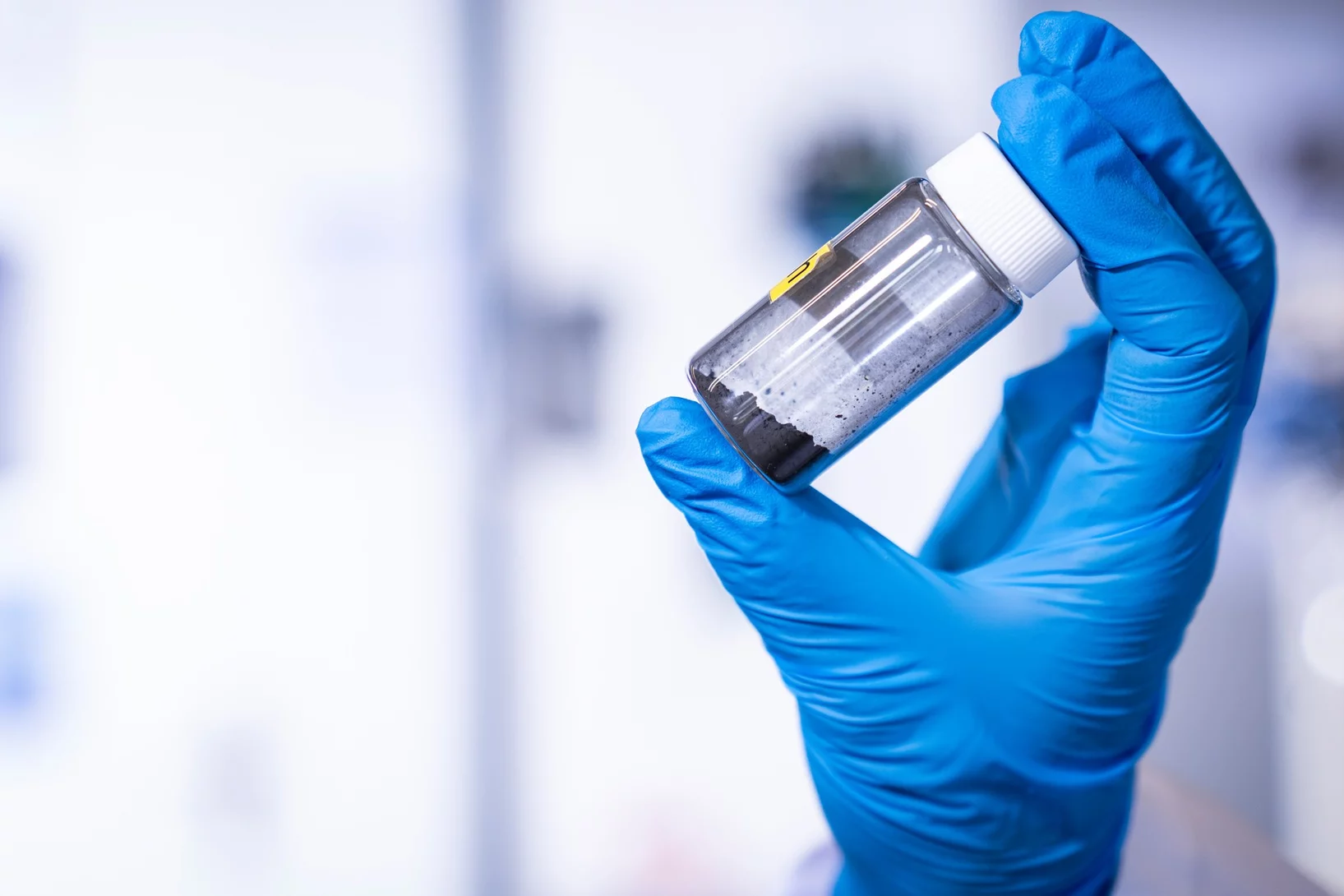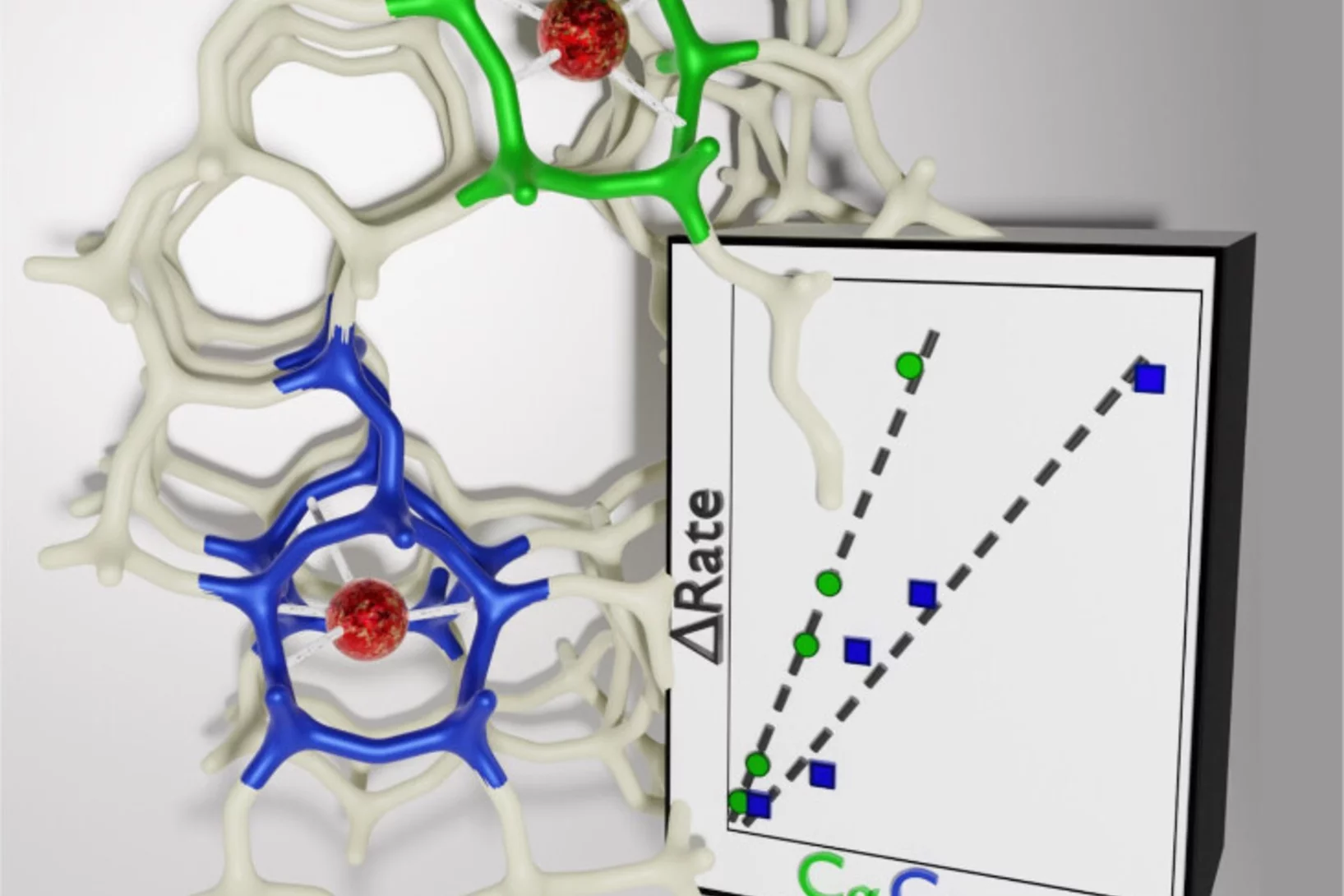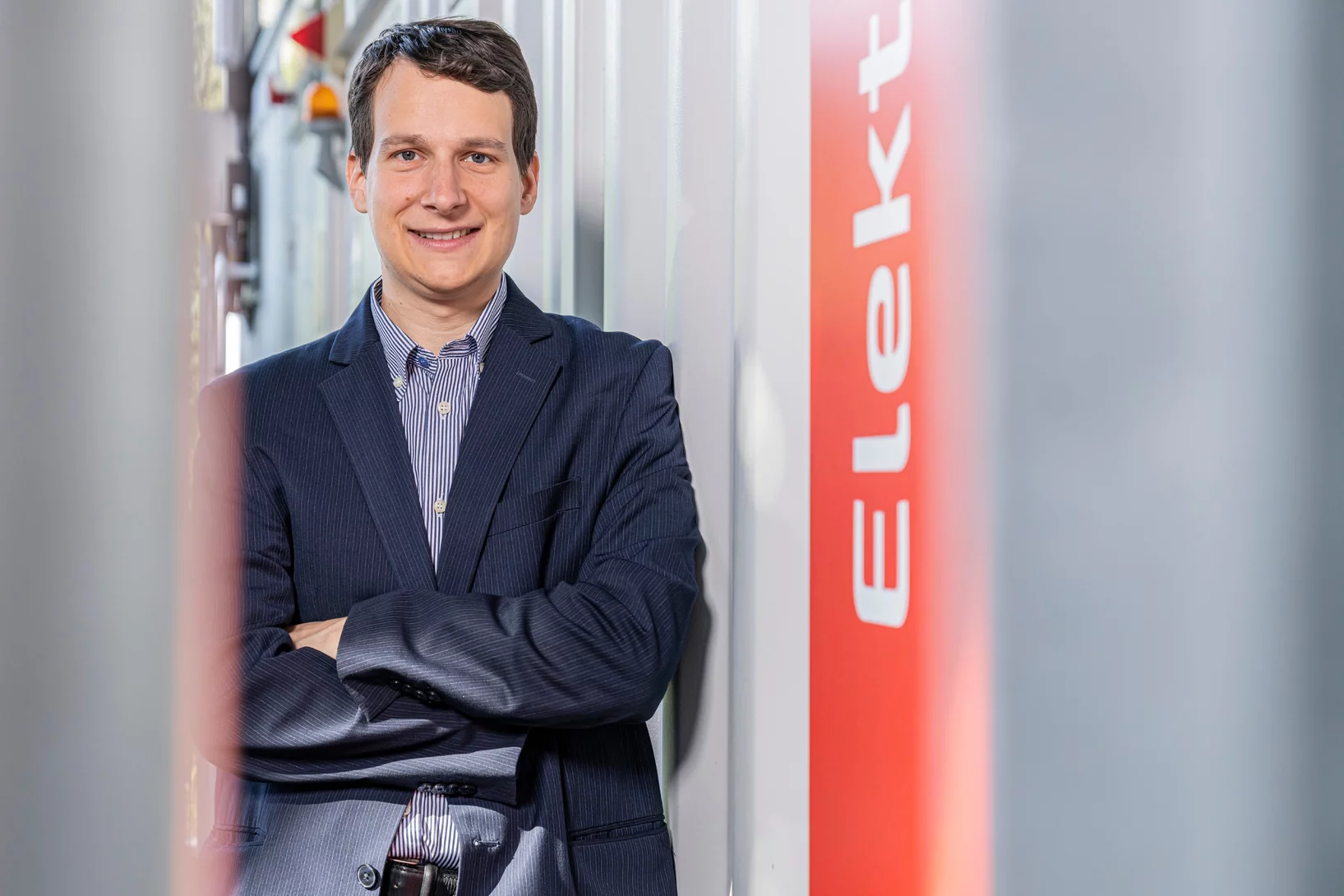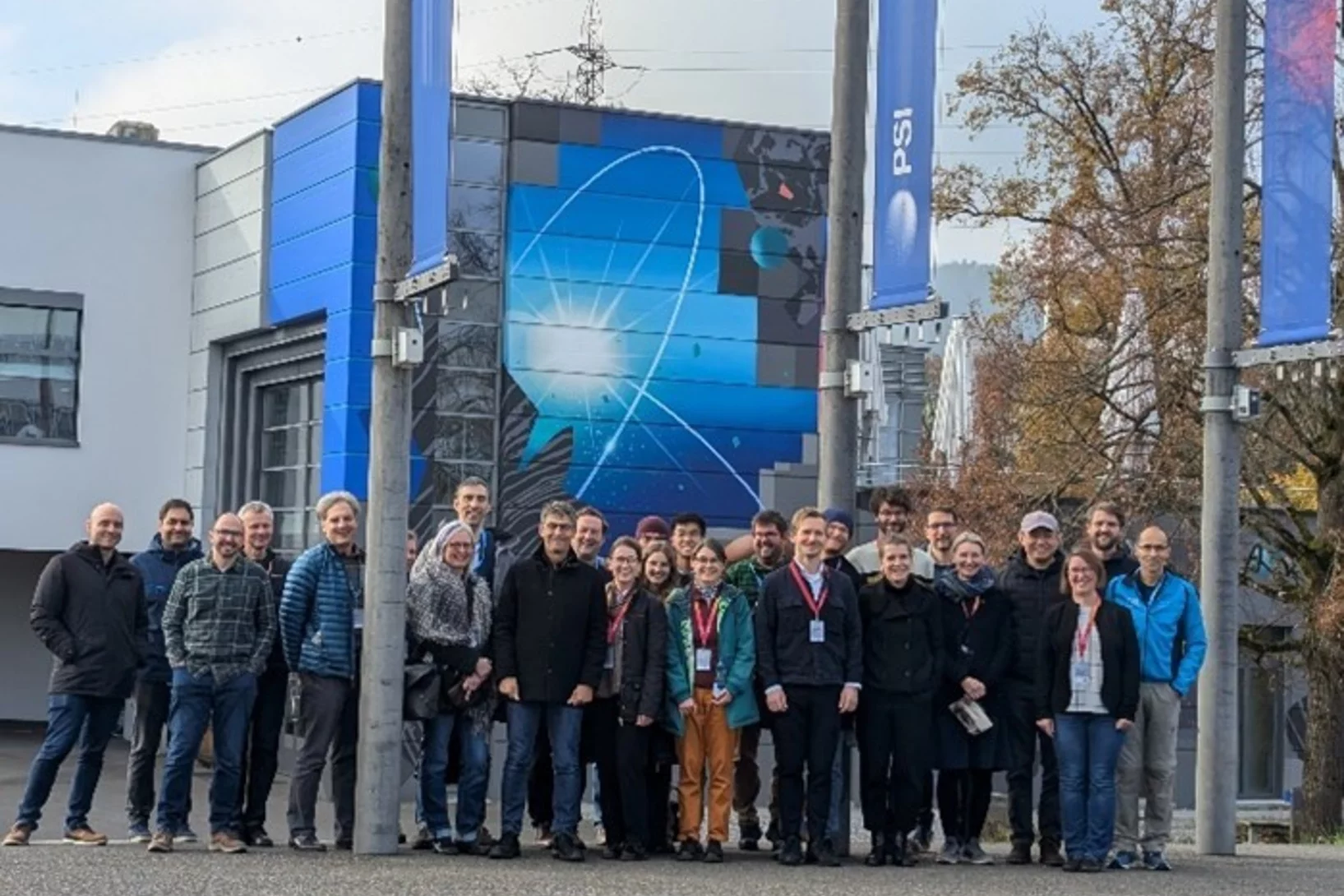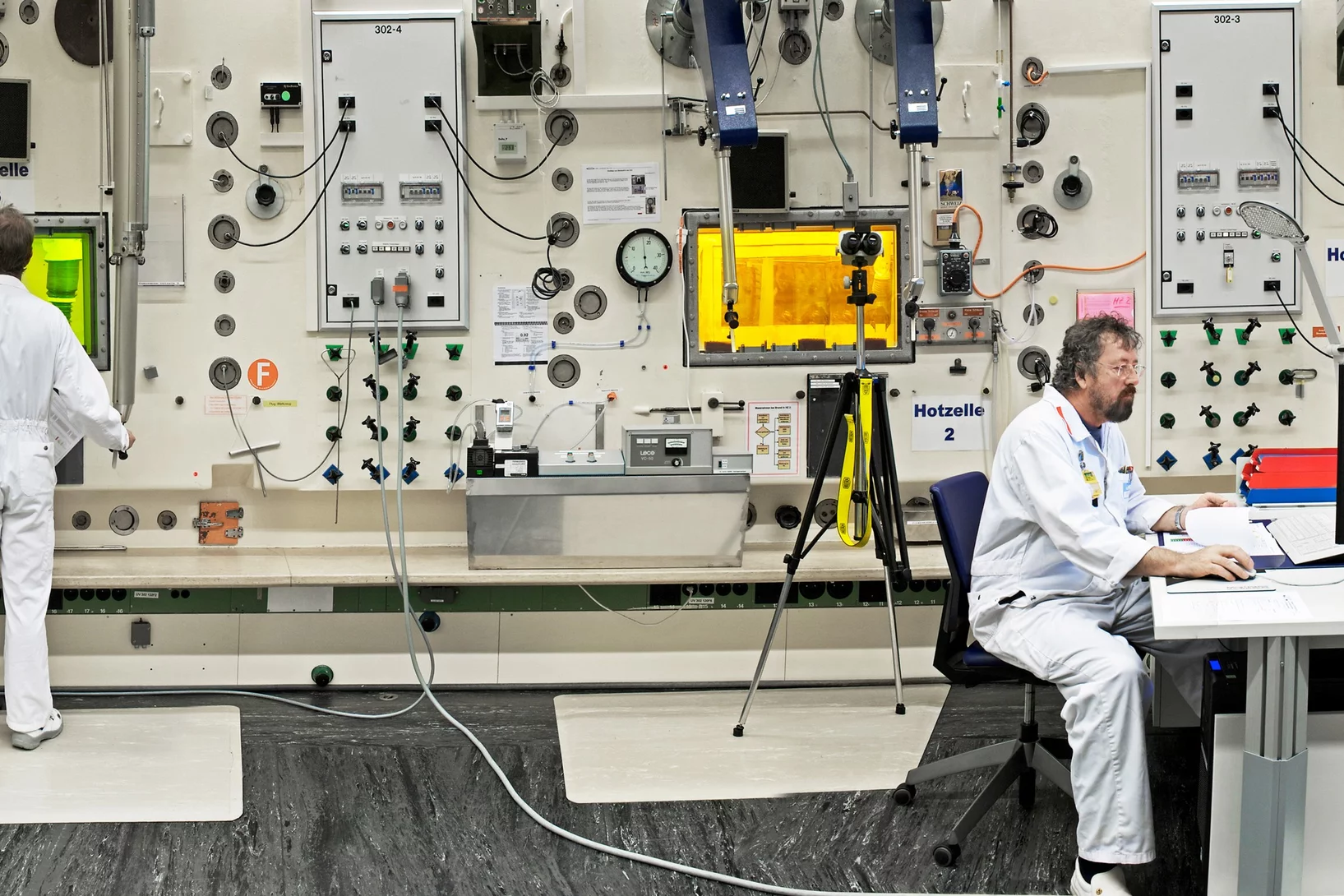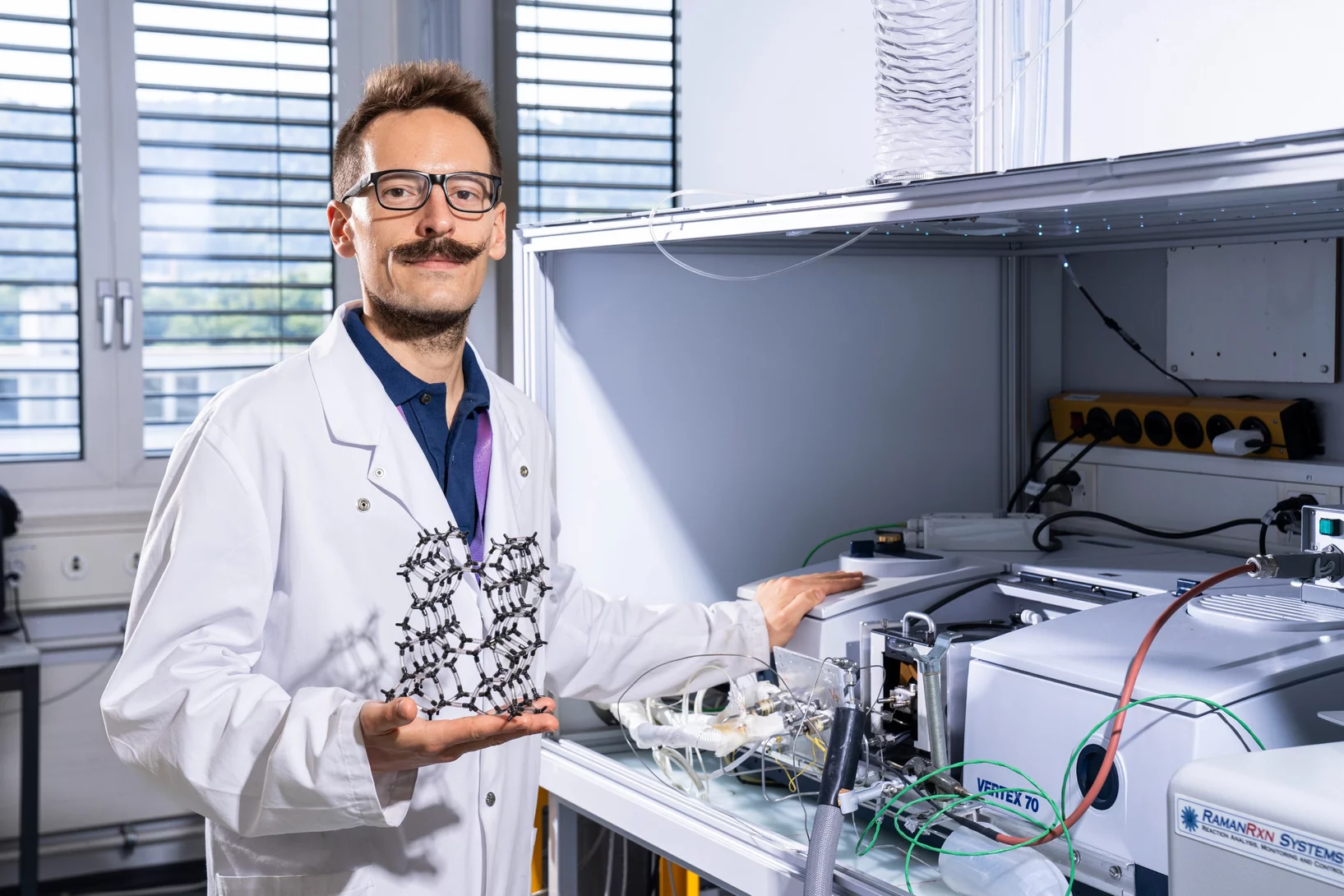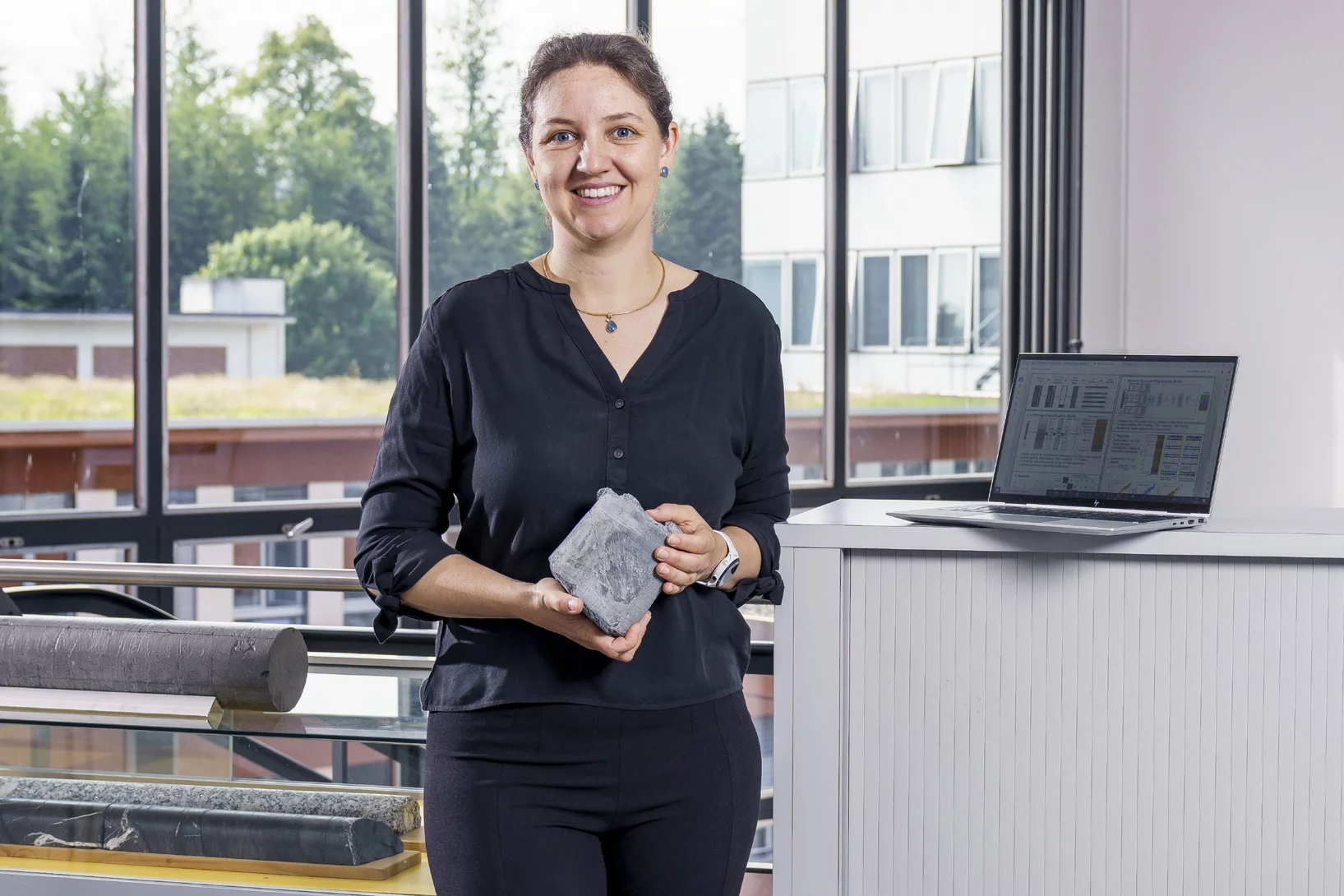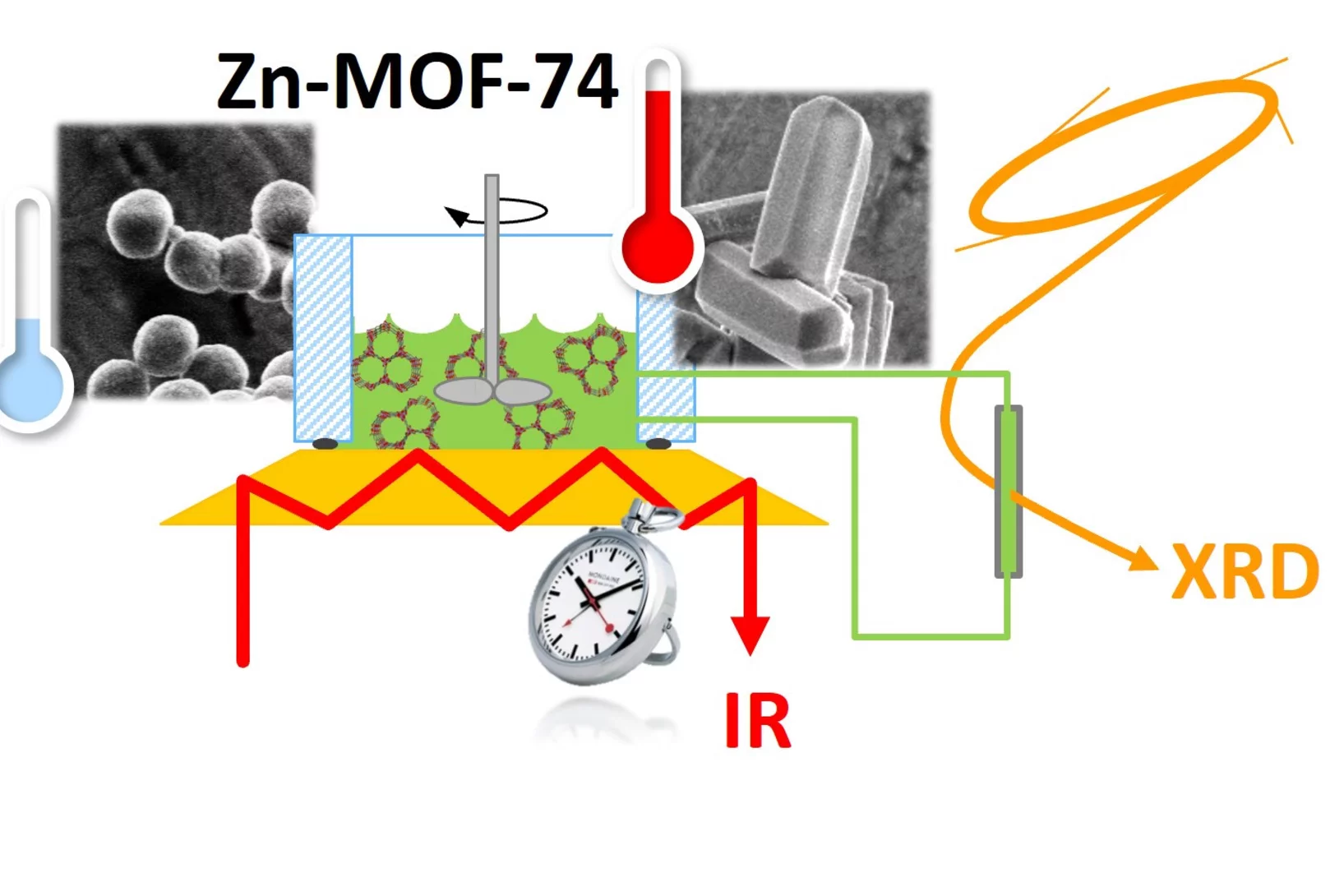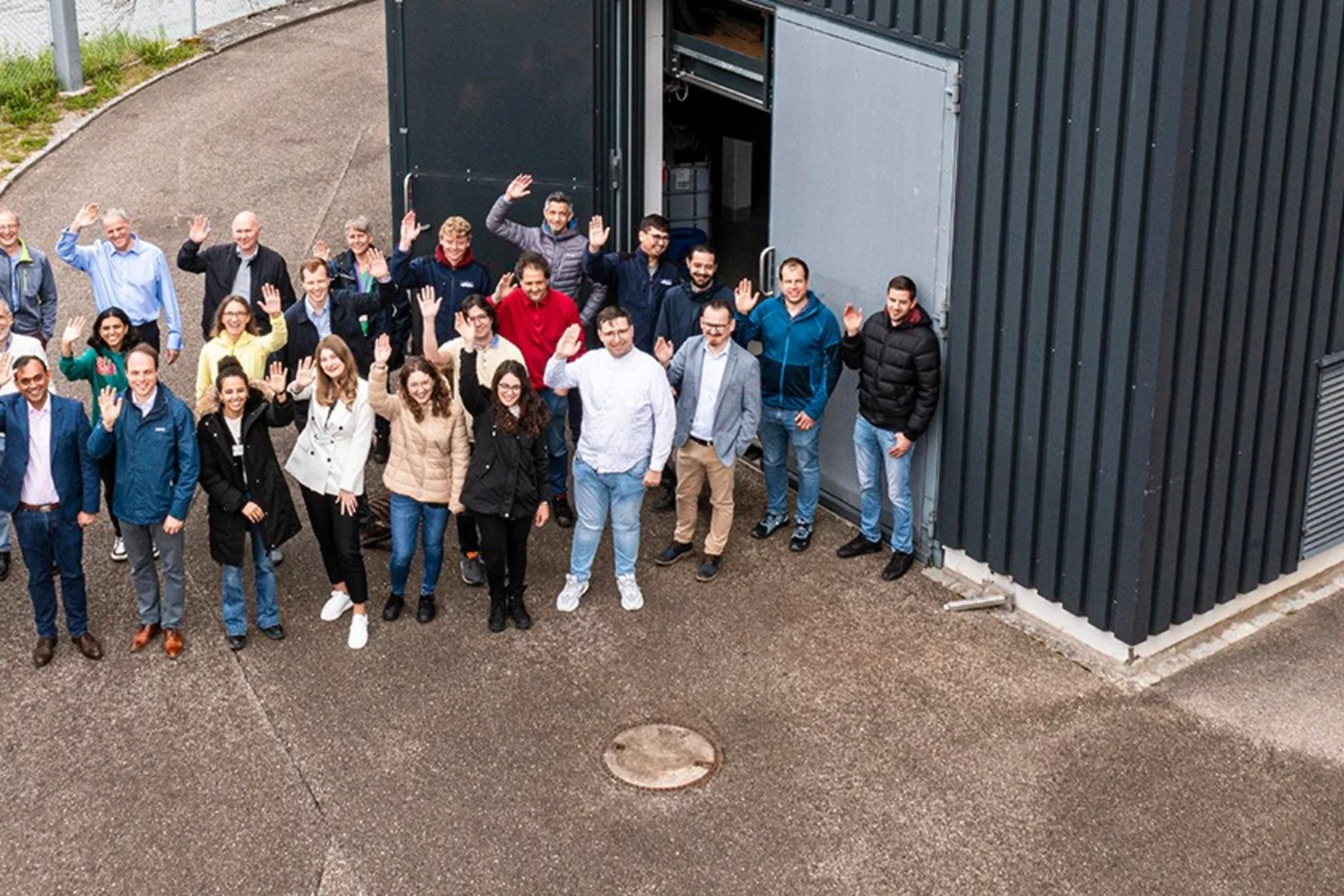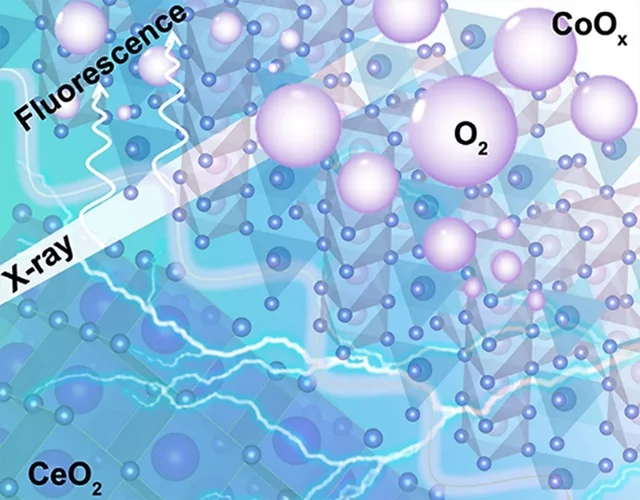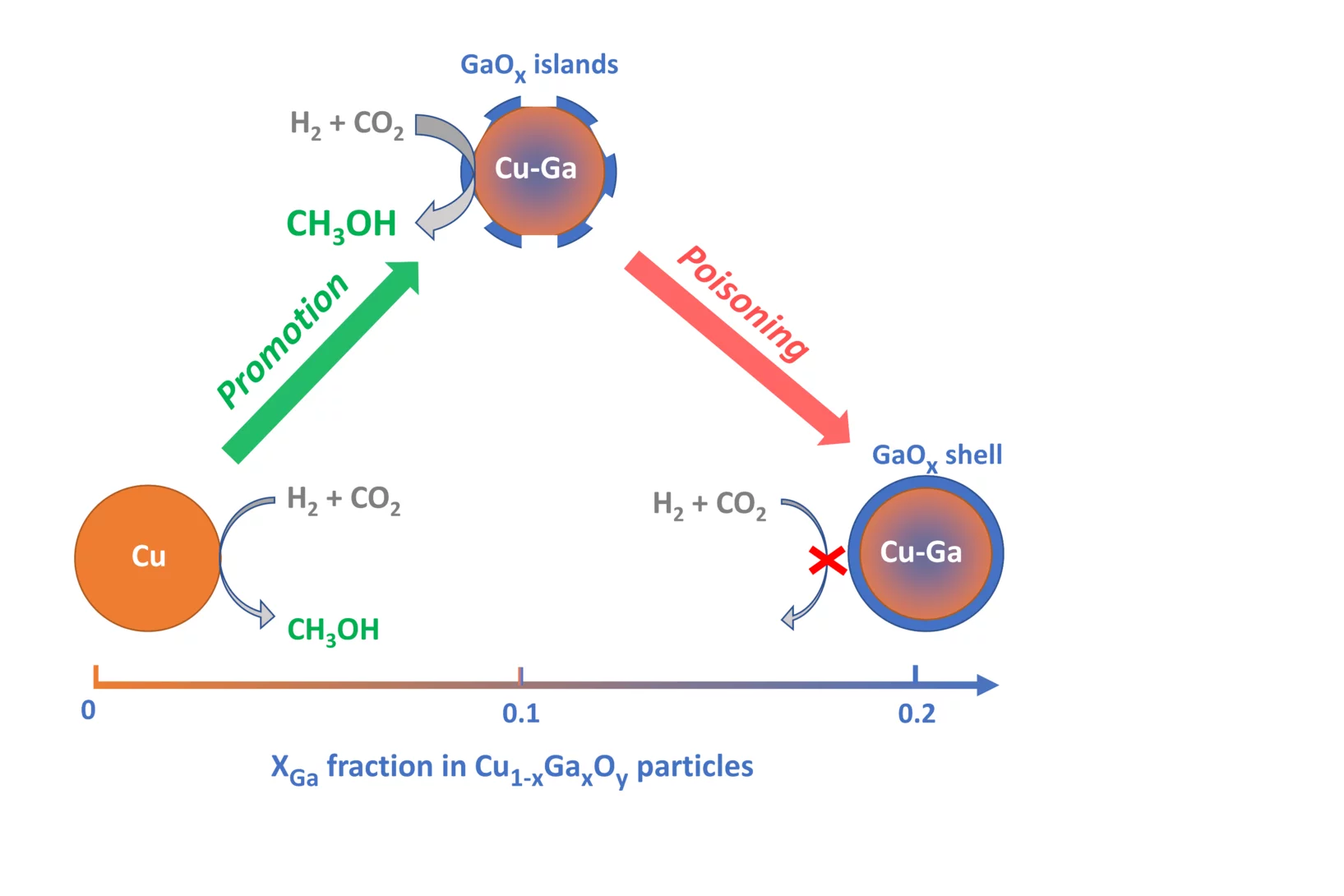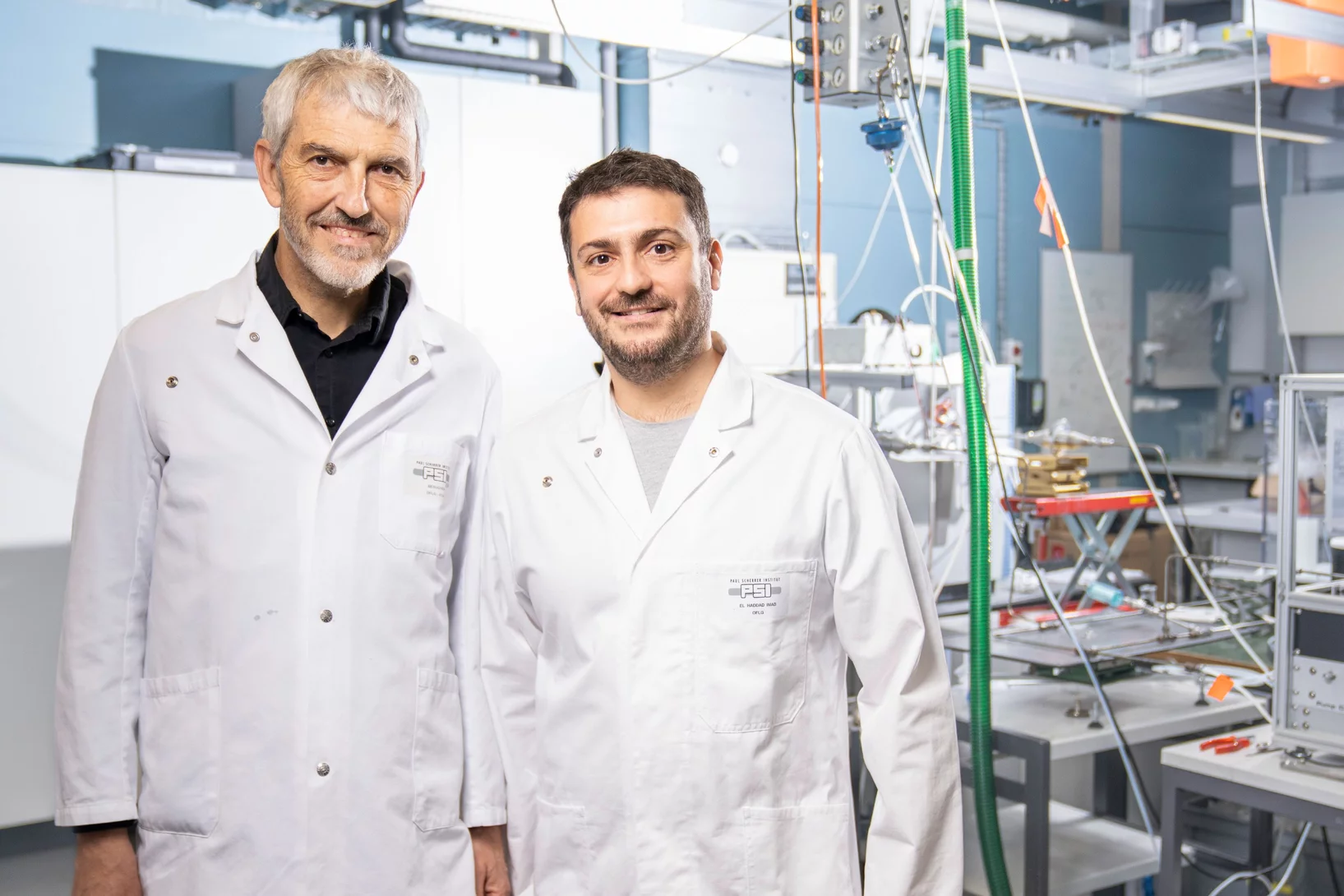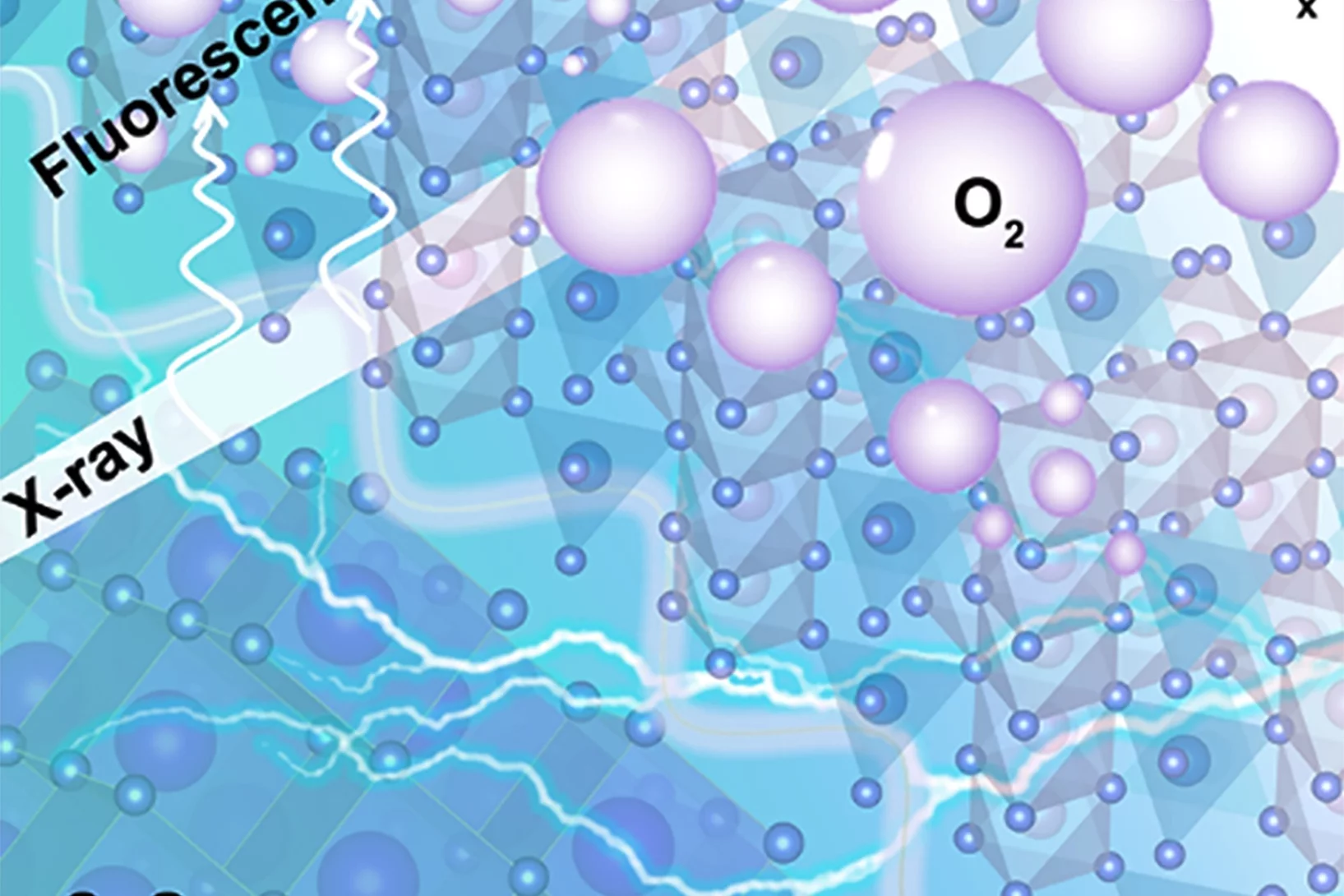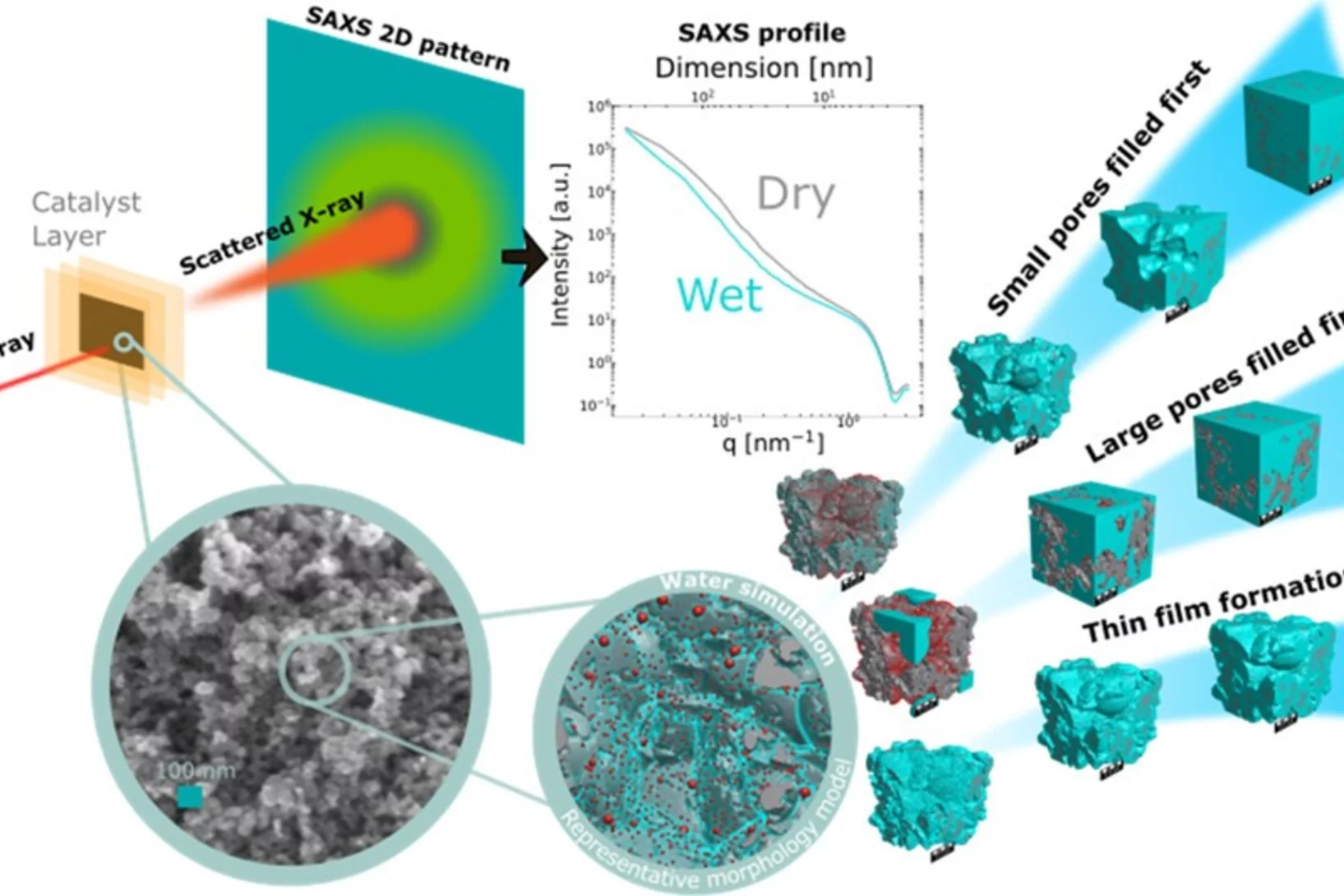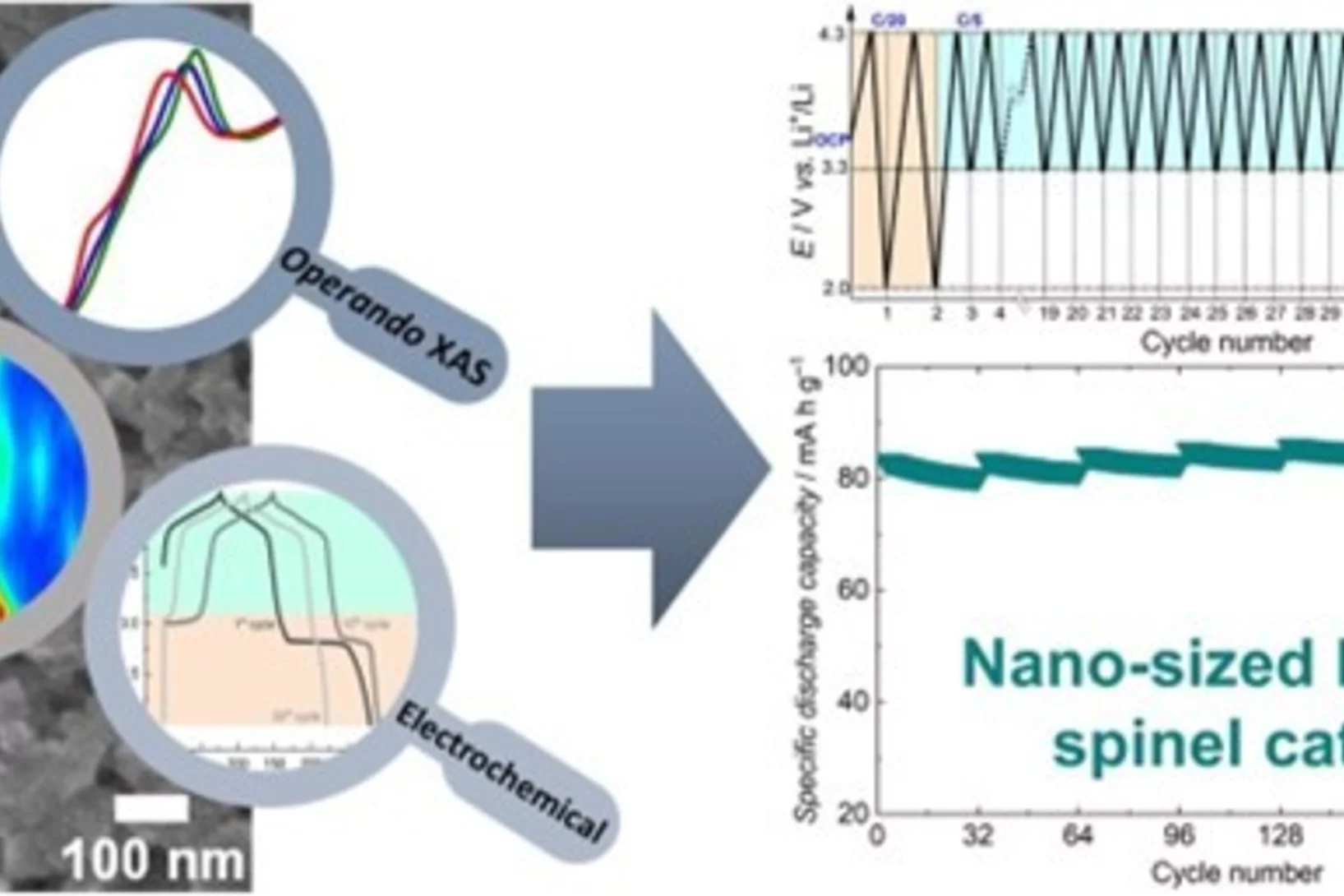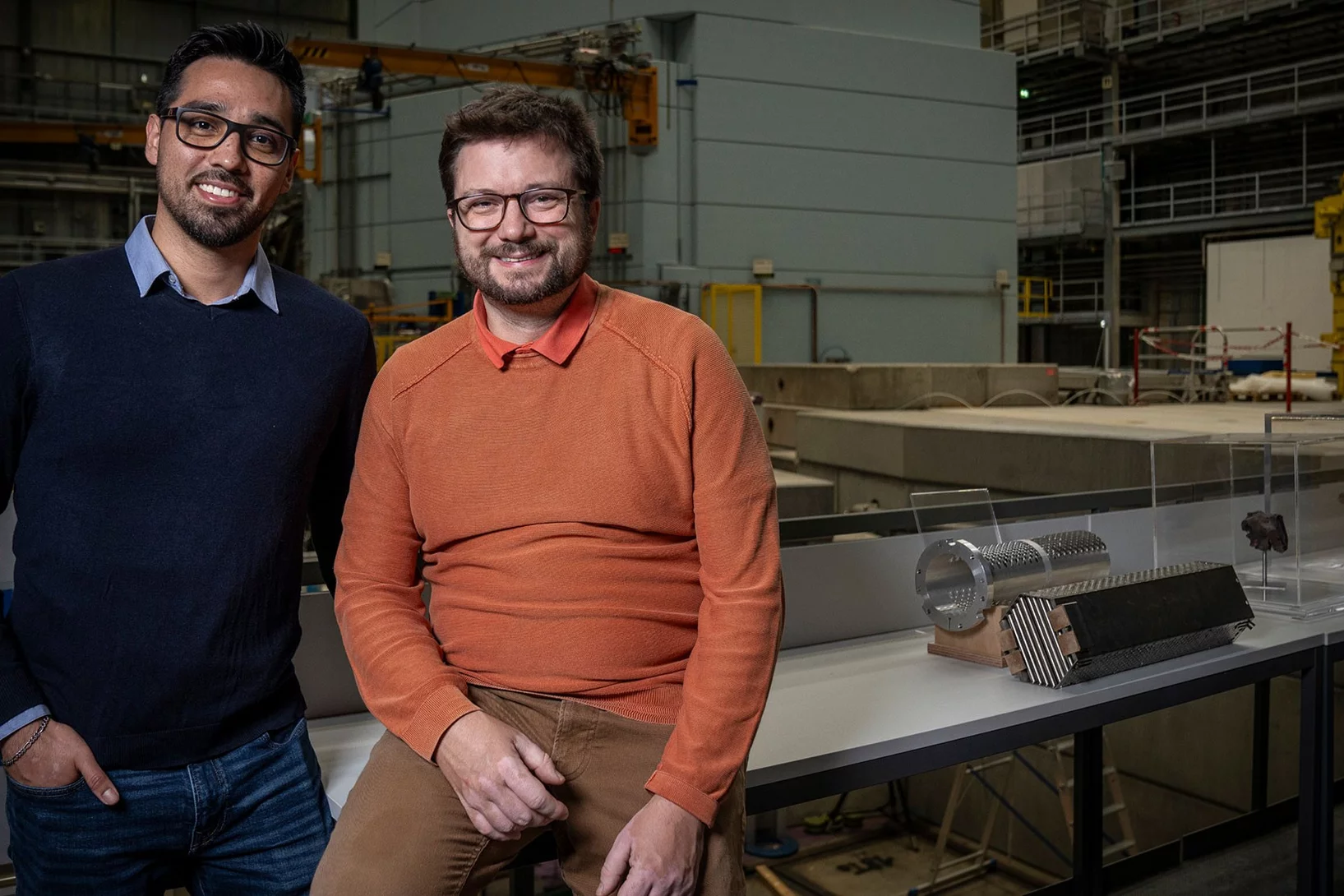Show filters
Du biogaz propre et universellement mesurable
Une nouvelle méthode d’analyse permet de détecter les plus infimes quantités d’impuretés critiques dans le biogaz.
Les voitures électriques et les pompes à chaleur aident la stratégie énergétique
Les pompes à chaleur à commande flexible et les voitures électriques pourraient à l'avenir réduire les importations d'électricité et faire baisser les prix de l'électricité. C'est ce que montre une nouvelle étude menée par un consortium de recherche suisse sous la direction de l'ETH Zurich.
Both natural and human emissions shape cloud formation high above Earth
What happens inside the CLOUD chamber?
Pollution fine réévaluée
Une nouvelle étude présente des données provenant de 43 sites européens qui montrent le stress oxydatif dans les poumons.
Faire progresser les technologies nucléaires
NUKEM et l’Institut Paul Scherrer signent un protocole d’accord pour promouvoir la recherche nucléaire et renforcer la coopération scientifique.
Des données pour un meilleur flux de vanadium
Des scientifiques du PSI ont développé une banque de données dynamique sur l’économie du vanadium. Elle devrait faire avancer l’utilisation de certains systèmes spéciaux de stockage d’énergie et, ce faisant, la transition énergétique.
POLIZERO: le projet du PSI montre comment atteindre la neutralité climatique
L’objectif zéro net est atteignable, à condition que la Suisse pose maintenant les bonnes bases politiques.
Study reveals: Smoke from crop residue burning worsens air pollution in Indian cities
Identifying the main source of air pollution in Indian cities is crucial to reducing the many deaths caused by fine particulate matter (PM₂.₅) – deaths that during the harvest season can account for up to half of all air pollution-related fatalities. An international research team lead by the Paul Scherrer Institute (PSI), funded by the Swiss Agency for Development and Cooperation (SDC) has investigated in detail the sources of the organic components of fine particulate matter in the northern Indian cities of Delhi and Kanpur, located in the Indo-Gangetic Plain. Using novel high-resolution molecular measurement techniques and advanced data analysis, the researchers were able to precisely identify and quantify the sources of organic fine particulate matter.
La recherche du PSI dans le musée le plus visité de Suisse
Rendre la recherche énergétique tangible: Le Musée des transports a créé une plate-forme pour encourager le dialogue politique et social autour des thématiques énergétiques.
Avec l’IA vers du ciment vert
Des scientifiques au PSI exploitent l’intelligence artificielle pour développer des formules de ciment qui ménagent l’environnement.
Une promotion ciblée de l'innovation pour la transition énergétique
Comment les innovations naissent-elles et comment peuvent-elles être encouragées de façon ciblée en vue de la transition énergétique? Michael Weinold, chercheur au PSI, a tenté de répondre à cette question en prenant pour exemple les lampes LED.
Water gets in shape for VUV absorption
Nanometre‑thin, free‑flowing liquid sheets now let Swiss Light Source users record pristine VUV absorption spectra of water, and soon any solvent.
Plus vite vers l’hydrogène vert
Si l’on utilise du cobalt comme catalyseur, le pH détermine la facilité avec laquelle on pourra fabriquer de l’hydrogène par électrolyse de l’eau. Des scientifiques du PSI viennent de découvrir pourquoi.
Neutralité carbone: inclure les matières premières
Un nouveau modèle de calcul du PSI visualise les interactions complexes entre technologie, besoins en matières premières critiques et impacts environnementaux nécessaires à la transition du système énergétique vers «zéro émission nette» de gaz à effet de serre.
Les polluants ne se forment souvent que dans l'air
Dans le cadre de l’expérience CLOUD au CERN, des scientifiques du PSI ont mesuré avec une précision jamais atteinte à ce jour comment les polluants atmosphériques organiques se forment et se répartissent.
Key reaction steps in the simultaneous conversion of nitrous and nitric oxides on Fe-ZSM-5
After proposing the reaction mechanism of the N2O-NO-SCR reaction on Fe-FER, here we attempted at controlling the Fe speciation on ZSM-5 and at generalizing the result obtained on FER.
Une nouvelle couche protectrice rend les batteries plus performantes
Augmenter la densité énergétique des batteries lithium-ion: c’est possible grâce à une méthode de revêtement de la surface de la cathode. Ce procédé durable a été développé au PSI.
Vers un trafic routier faiblement émetteur de dioxyde de carbone
Des scientifiques de l’Institut Paul Scherrer PSI montrent comment une intégration habile des énergies renouvelables permettrait de décarboniser le trafic routier.
Preparing the Future of PSI Large Facilities in Atmospheric Research
The Multiphase Chemistry Group in the Laboratory of Atmospheric Chemistry (LAC) looks back to a nearly 20 years record of activities with in situ X-ray photoelectron spectroscopy (XPS) and in situ scanning transmission X-ray spectromicroscopy (STXM) to address key fundamental questions in atmospheric chemistry. This is the time to consider new horizons, align with current and future needs in atmospheric sciences, and to identify novel opportunities driven by upcoming trends in methods, technologies and facilities. This has been the topic of the Workshop ‘X-ray and Neutron Spectroscopy, Scattering and Imaging in Atmospheric Chemistry’, held at PSI 13 – 15 November 2024.
Le Laboratoire Chaud a 60 ans
En Suisse, l’installation nucléaire en service depuis le plus longtemps se trouve à l’Institut Paul Scherrer PSI. Elle fête son anniversaire aujourd’hui.
S’attaquer à la racine d’un problème de santé global
Imad El Haddad analyse la composition chimique et l’impact sur la santé des particules fines au Center for Energy and Environmental Sciences de l’Institut Paul Scherrer PSI.
iLab et SynFuels aux Energy Days ! au Musée Suisse des Transports
18, 19 et 20 octobre 2024
Le iLab de l'Institut Paul Scherrer participera aux Energy Days avec des ateliers passionnants. Découvrez comment nous pouvons stocker l'énergie renouvelable grâce à des technologies innovantes comme le Power-to-Gas et faire avancer la transition énergétique.
Dual-site reaction mechanism for the simultaneous reduction of nitrous and nitric oxides
We have applied three spectroscopic techniques (XAS, EPR and DRIFTS) in combination withe modulated excitation and catalytic data to decipher and propose the complete reaction mechanism of the simultaneous reduction of N2O and NO
Comment les catalyseurs éliminent des oxydes d’azote dangereux
En catalyse industrielle, le fer n'est pas égal au fer.
Exploration du sous-sol avec l’intelligence artificielle
Les propriétés des unités géologiques sont obtenues à l’aide d’images de carottes de forage.
Aussi rapide qu’un avion et aussi propre qu’un train
Dans le cadre d’une collaboration suisse, des scientifiques ont analysé l’impact environnemental potentiel du concept Hyperloop.
Uncovering the secrets of rapid and green metal-organic framework synthesis
Using ATR-IR spectroscopy and high-energy XRD, we have studied the mechanism of ambient temperature aqueous synthesis of Zn-MOF-74. Starting from the need to change Zn precursor to disentangle signals in ATR-IR spectroscopy, we also developed a rapid synthesis of Zn-MOF-74 with Zn perchlorate.
Carbenium ions in the methanol-to-olefins process
The methanol-to-olefins process converts methanol into hydrocarbons over zeolite-based catalysts following a dual-cycle reaction mechanism within the paradigm of an hydrocarbon pool chemistry. In this work, we use operando DRIFTS/GC to correlate the nature of species residing within the porosity of zeolites (DRIFTS) and the products distribution (GC).
Hydrogen Electrode for Membrane Water Electrolyzers with Low Gas Crossover
Proton exchange membrane (PEM) water electrolyzer are considered a for the Energy Transition to produce green hydrogen for fuel cell-based mobility, industrial processes, and seasonal storage. Platinum group metals (PGMs) are conventionally used as catalysts for electrode reactions due to their outstanding catalytic activity and chemical stability in the harsh acidic environment of the cell. Commercial carbon-supported platinum (Pt/C) electrocatalysts remains a state-of-the-art choice for the hydrogen evolution reaction (HER) on the cathode side of the cell. While a high Pt loading between 0.5 and 1.0 mgPt/cm2 is commonly used today, a reduction of the Pt loading to below 0.05 mgPt/cm2 is desired to reduce the cost of PGM usage in megawatt-scale PEM water electrolysis systems. In addition, in connection with the trend towards the use of thinner membranes (<0.1 mm), gas crossover through the membrane from the cathode to the anode side can lead to the formation of an explosive gas mixture in the anode product stream. In this study, we varied the design parameters for the cathode catalyst layer to reduce the Pt loading to 0.025 mg/cm2 while at the same time minimizing the rate of hydrogen crossover to the anode.
Où doit être produit l’hydrogène à l’avenir?
Des scientifiques du PSI ont étudié où l’hydrogène devait être produit pour une future économie de l’hydrogène et quelles étaient les conséquences de cet agent énergétique pour l’environnement.
Les sources du smog à Beijing ont été identifiées
Des scientifiques du PSI ont identifié les sources du smog à Beijing. Certaines d’entre elles sont très éloignées de la capitale chinoise.
Du carburant d’aviation durable produit sur le campus du PSI
En collaboration avec la start-up climatique Metafuels, une installation pilote de production de carburant d’aviation durable verra le jour sur le campus du PSI.
Le numérique: une bénédiction pour la transformation énergétique
Des scientifiques du PSI ont calculé l’influence de l’avènement du numérique sur la consommation d’énergie.
Insights into the superior oxygen evolution reaction activity of CoOx/CeO2 composite electrocatalyst
CeO2 significantly enhances the oxygen evolution reaction (OER) activity of CoOx, although the mechanism behind this synergy is still unclear. Here, operando hard X-ray absorption spectroscopy (hXAS) is applied to monitor the Co-K edge and Ce L3 edge in CoOx/CeO2 to shed light on the evolution of Co and Ce oxidation states during OER. In addition, ex situ soft XAS (sXAS) characterizations provide information on the irreversible surface-specific transformations of the Co L3 edge as well as the O K edge.
Real-Time Insights into Sodium-Ion Battery Chemistry
Identification of gaseous decomposition products from irreversible side-reactions enables understanding of inner working of rechargeable batteries. Unlike for Li-ion batteries, the knowledge of the gas-evolution processes in Na-ion batteries is limited. Our study revealed that Na-ion cells develop a less stable solid-electrolyte interphase (SEI) compared to Li-ion cells due to higher solubility of SEI constituents in Na-electrolytes.
Les aérosols peuvent-ils enrayer le réchauffement de la Terre?
Injecter des particules dans la stratosphère pour refroidir la Terre? En interview, Markus Ammann, chercheur au PSI, s’exprime de manière critique sur le sujet controversé de la géo-ingénierie solaire.
Promotion versus Poisoning in Copper–Gallium-Based CO2-to-Methanol Hydrogenation Catalysts
Cu–Ga-based CO2-to-methanol hydrogenation catalysts display a range of catalytic performance, depending on their preparation. Here, we investigated how the Ga/Cu ratio and Ga speciation affect the catalytic activity. Using surface organometallic chemistry, we prepared a series of silica-supported 3–6 nm Cu1–xGaxOy nanoparticles with a range of xGa. The materials display a volcano-type activity behavior, where methanol formation is promoted when xGa < 0.13–0.18 and is suppressed at higher values, indicating a poisoning of the catalysts. In situ X-ray absorption spectroscopy and in situ infrared spectroscopy helped to understand the structure-activity relationship.
Comment rendre l’air de New Dehli plus propre?
Des scientifiques du PSI sont sur la piste des aérosols pathogènes en Inde.
Polybenzimidazole Membrane Design Principles for Vanadium Redox Flow Batteries
Energy storage technologies with long storage duration are essential to stabilize electricity grids with a high share of intermittent renewable power. In a redox flow battery, the electrochemical conversion unit, where the charging and discharging reaction takes place, is spatially separated from the energy storage medium. In the all-vanadium redox flow battery (VRFB), a sulfuric acid aqueous electrolyte with dissolved vanadium ions is used as the storage medium. Vanadium is present in 4 different oxidation states, the redox couple vanadium(II) and (III) on the negative side of the cell, and vanadium(IV) and (V) on the positive side. This allows the battery to be repeatedly charged and discharged. A separator or membrane is used between the negative and positive electrode, which should selectively conduct the ions of the supporting electrolyte and minimize the passage of vanadium ions. Fluorinated membranes, such as Nafion™, are often used for this key component, but these ionomers were not originally developed for this application and therefore have functional shortcomings. Furthermore, the production and use of fluorinated materials is to be severely restricted or even banned in Europe. Therefore, the development of hydrocarbon-based membranes for the VRFB is of great importance. The study reported here focuses on polybenzimidazole polymers and membranes, which could be a promising materials class for next generation flow batteries.
Est-il possible de voler sans impact sur le climat?
Le trafic aérien doit devenir climatiquement neutre. Quelle pourrait être la contribution des carburants durables, comme ceux que l’on développe au PSI?
Unraveling degradation processes in a bipolar membrane CO2 electrolyzer by time-resolved X-ray tomographic microscopy
Employing a bipolar ion conducting membrane (BPM) in forward bias is a convenient solution for the biggest issues in the more common anion exchange membrane (AEM) CO2 co-electrolysis: the degradation of the performance caused by carbonate salt precipitation at the cathode and the decrease of net CO2 conversion caused by the crossover of this molecule from cathode to anode also requiring energy for downstream gas separation. However, the performance and stability of this device remain largely insufficient when using such a BPM configuration. To understand the reasons for this, we performed time-resolved X-ray tomographic microscopy of an operating BPM CO2 electrolyzer. The imaging method reveals partly unexpected degradation processes that result in design recommendations for improvement.
Insights into the superior oxygen evolution reaction activity of CoOx/CeO2 composite electrocatalyst
CeO2 significantly enhances the oxygen evolution reaction (OER) activity of CoOx, although the mechanism behind this synergy is still unclear. Here, operando hard X-ray absorption spectroscopy (hXAS) is applied to monitor the Co-K edge and Ce L3 edge in CoOx/CeO2 to shed light on the evolution of Co and Ce oxidation states during OER. In addition, ex situ soft XAS (sXAS) characterizations provide information on the irreversible surface-specific transformations of the Co L3 edge as well as the O K edge.
La fonte d’un glacier détruit une importante archive de données climatiques
Des scientifiques du PSI ont analysé deux carottes de glace prélevées sur le glacier de Corbassière au Grand Combin.
Quantification of PEFC Catalyst Layer Saturation via Small-Angle X‑ray Scattering
The complex nature of liquid water saturation in polymer electrolyte fuel cell (PEFC) catalyst layers (CLs) greatly affects the device performance. To investigate this problem, a method to quantify the presence of liquid water in a PEFC CL using small-angle X-ray scattering (SAXS) was developed in a collaboration of researchers of the Federal Institute for Materials Research and Testing (BAM, Berlin, Germany), the Photon Science Division and the Electrochemistry Laboratory of PSI. The method leverages the differences in electron densities between the solid catalyst matrix and the CL-pores filled with liquid water under dry and wet conditions, respectively.
Quel est l’importance de l’hydrogène pour la transition énergétique?
Thomas J. Schmidt, expert en énergie au PSI, fait le point.
Understanding the (de-)lithiation mechanism of nano-sized LiMn2O4 allows achieving long-term cycling stability
We report an in-depth investigation of the local atomic geometry, electronic and crystallographic structure evolution of nano-sized LiMn2O4 using operando XAS and XRD to shed light on (de-)lithiation mechanism when cycled in wide voltage range of 2.0 to 4.3 V vs Li+/Li. Leveraging on these findings, a novel electrochemical cycling protocol, with periodic deep discharge, yields superior electrochemical performance cycled in the range of 3.3 to 4.3 V exhibiting an excellent structure cyclability and an unprecedented increase in the specific capacity upon long cycling.
Améliorer les batteries des voitures électriques
Des scientifiques du PSI utilisent des neutrons pour visualiser les modifications physiques et chimiques qui se produisent dans l’électrolyte des batteries.
Insights into radical induced degradation of anion exchange membrane constituents
Electrochemical energy conversion devices, such as fuel cells and electrolyzers, using an anion exchange membrane (AEM) operating in the alkaline regime offer the prospect of the use of non-noble metal electrocatalysts and lower-cost cell construction materials. The wide-spread application of electrochemical cells with AEMs has been largely limited by the low chemical stability of the material. AEM degradation is triggered by i) nucleophilic attack by OH−, and ii) by reaction with free radicals formed during cell operation. Whereas the alkaline stability of AEMs has been greatly increased over the last 10 years, the understanding of mechanisms of radical induced degradation is limited. In this study, we have addressed this topic for the first time.

